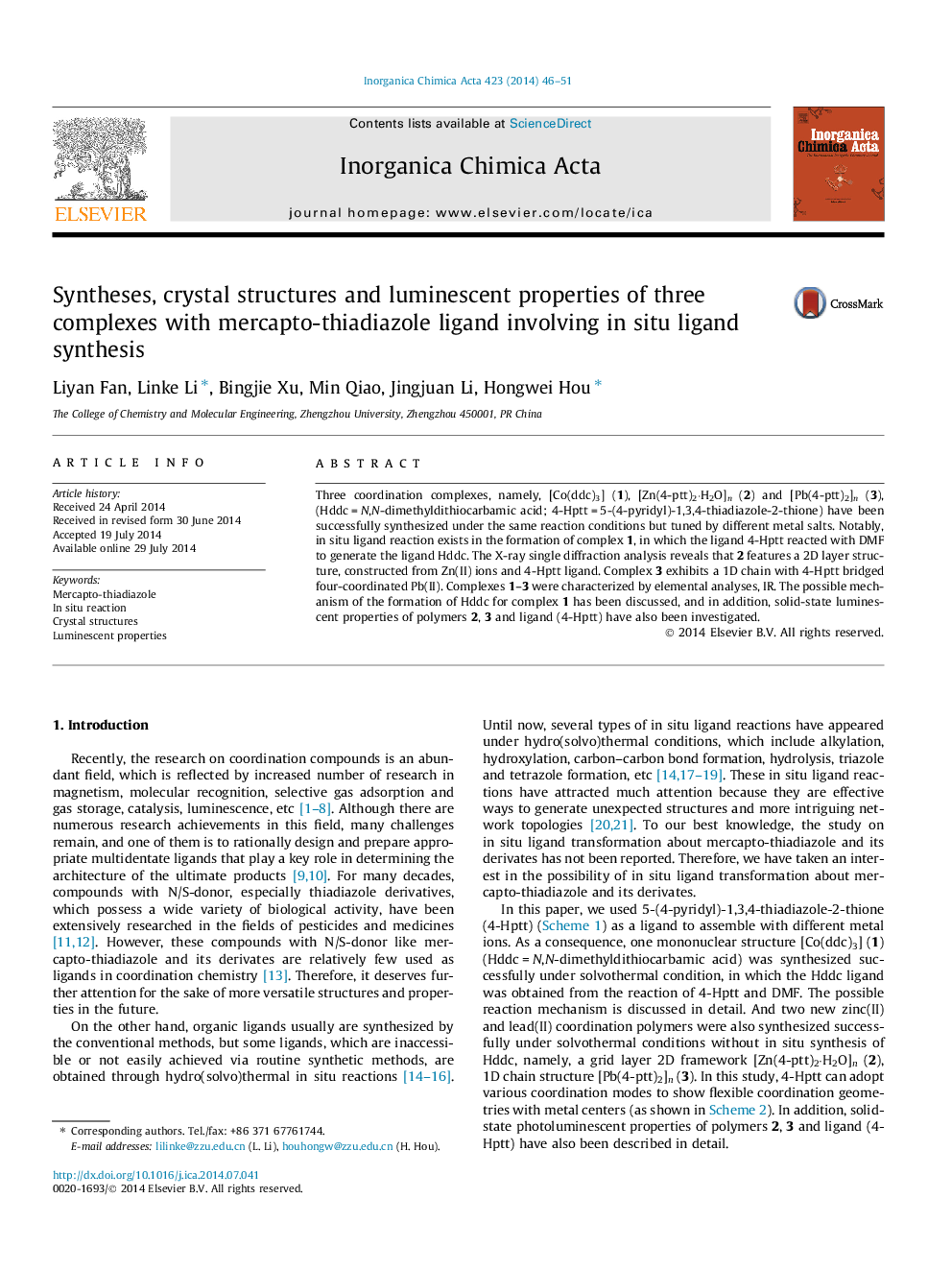| Article ID | Journal | Published Year | Pages | File Type |
|---|---|---|---|---|
| 1309437 | Inorganica Chimica Acta | 2014 | 6 Pages |
•Three coordination complexes based on mercapto-thiadiazole ligand were gained.•Complex 1 shows an in situ transformation of 4-Hptt into Hddc.•Complex 2 features a 2D grid layer.
Three coordination complexes, namely, [Co(ddc)3] (1), [Zn(4-ptt)2·H2O]n (2) and [Pb(4-ptt)2]n (3), (Hddc = N,N-dimethyldithiocarbamic acid; 4-Hptt = 5-(4-pyridyl)-1,3,4-thiadiazole-2-thione) have been successfully synthesized under the same reaction conditions but tuned by different metal salts. Notably, in situ ligand reaction exists in the formation of complex 1, in which the ligand 4-Hptt reacted with DMF to generate the ligand Hddc. The X-ray single diffraction analysis reveals that 2 features a 2D layer structure, constructed from Zn(II) ions and 4-Hptt ligand. Complex 3 exhibits a 1D chain with 4-Hptt bridged four-coordinated Pb(II). Complexes 1–3 were characterized by elemental analyses, IR. The possible mechanism of the formation of Hddc for complex 1 has been discussed, and in addition, solid-state luminescent properties of polymers 2, 3 and ligand (4-Hptt) have also been investigated.
Graphical abstractOne mononuclear complex [Co(ddc)3] (1), a 2D grid layer [Zn(4-ptt)2·H2O]n (2) and a 1D chain [Pb(4-ptt)2]n (3) were obtained. Notably, complex 1 shows an in situ transformation of 4-Hptt into Hddc. The possible mechanism of the formation of Hddc for complex 1 has been discussed, and solid-state luminescent properties of polymers 2, 3 and ligand (4-Hptt) have also been investigated.Figure optionsDownload full-size imageDownload as PowerPoint slide
